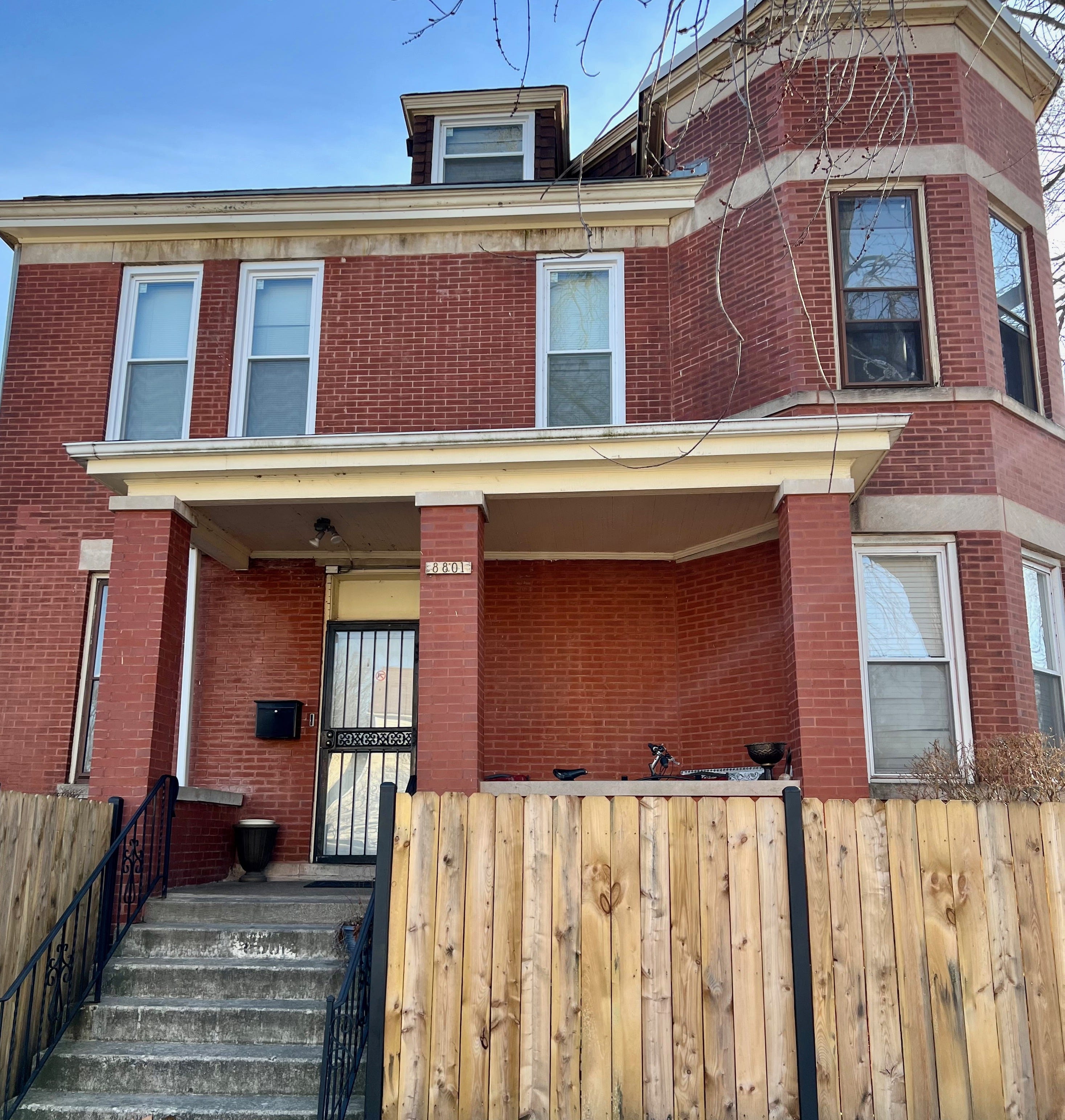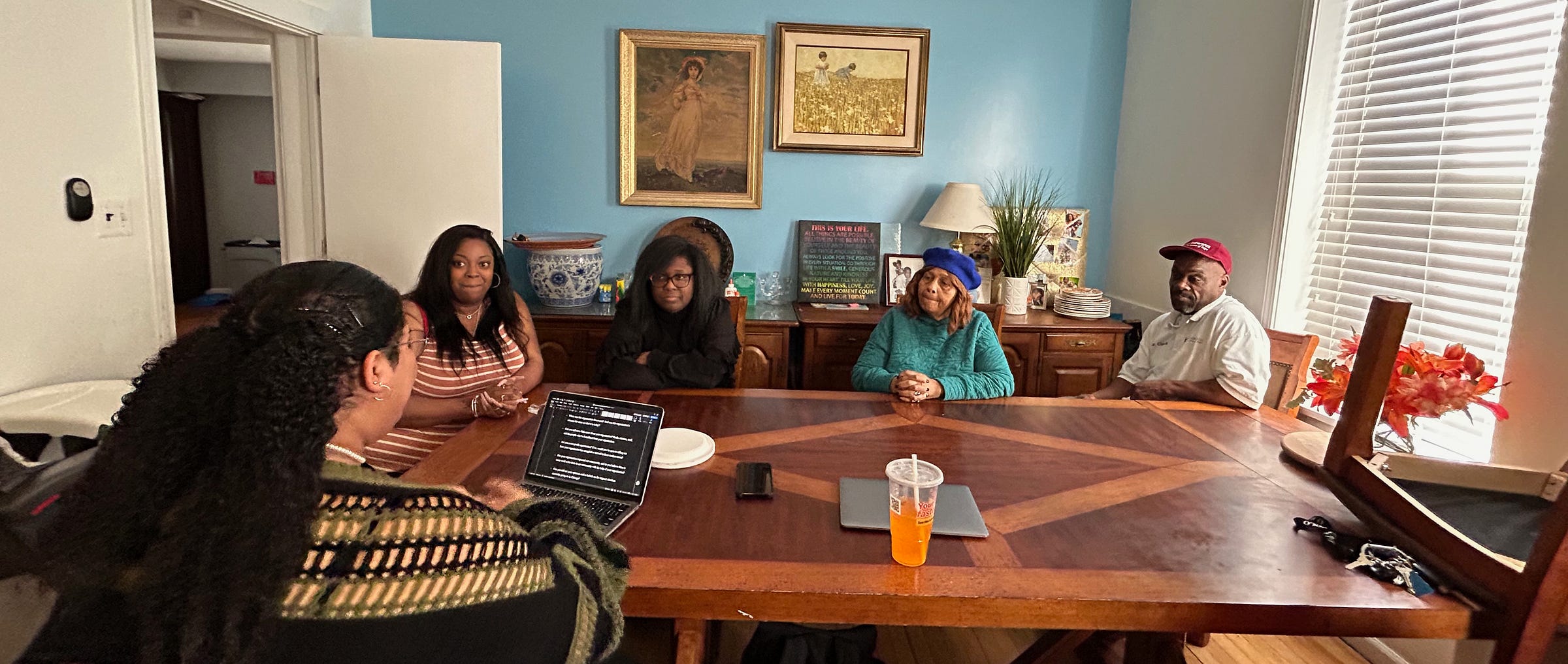In This South Side Casa, Help And Hope for Migrant Families
Among the verbal backlash is the sentiment that migrants should leave the U.S. and go back home. But the picture of life here for many migrants, some have contended, is much less than rosy.

By Erica Hayden
Inside this two-story brick South Side house of hopes, beams of sunshine blanket the roof. A common room is laden with clothes within bags, containers. On a nearby folding table, children’s toys—from stuffed animals to small toy metal cars—lie in a pile.
This was the scene recently at Casa Esperanza, a non-profit organization established in October 1994, by the Society of Helpers. Its mission: To help migrant women and families transition out of poverty and find long-term housing.
For the last 30 years, organizers say, Casa Esperanza has sought to fulfill its mission to help others get on the right track. Among its programs are parenting classes, resume workshops, psychotherapy, and monthly financial literary workshops (for women and the youth). It also offers an after school program Monday through Thursday, as well as a monthly partnership program with US Bank that teaches people how to open a savings/checking account, mortgages, and manage credit.
Women and families are free to stay at Casa for two years, but, the long-term goal is to find a permanent home for themselves. Casa Esperanza conducts initial interviews to get a sense of the individual seeking help, and to uncover a participant’s strengths, weaknesses, and the kinds of services each individual might need specifically.
However, there are certain criteria that participants must meet to become potential residents such as being in school, employed, or in vocational training, and being recommended by an agency, shelter, or other programs. The team includes: Elaine Seaton: executive director, Kendreia Redmond: therapist, Patricia Johnson & Jennifer White: case manager, and Claude Jones, maintenance worker.
With Chicago’s ongoing migrant crisis, Casa Esperanza is among many organizations in Chicago working to provide support to house, feed, and clothe those most in need.
“I don’t know if Casa is necessarily doing a lot to help the migrants, I think we are doing what we are able to do,” said Elaine Seaton, Casa’s executive director. “I feel like it would be a disservice to bring someone in a space where they could not engage with other residents or staff could not engage with them. We’re willing to help anyone.”
Casa Esperanza is located at 8801 S Saginaw Ave. Heidy Nunez, 29, currently a resident of Casa Esperanza, said that life for her was dramatically different before arriving at Casa Esperanza’s doorsteps.
“I was engaged to my fiancé for three months- I really feel like we were being abused, and it really hit me one day when he yelled at her (Heidy N.’s child) and shook her from her arm. So, I felt like we were being verbally abused and physical,” she continued in an interview. “So I panicked, called the 3119 number, and that’s how I ended up here in Casa.”
Since August 31, 2022, there have been more than 35,000 migrants who have come to Chicago, according to ABC7 Chicago. Many of the migrants coming are originally from Venezuela, largely due to the harsh living situations in Venezuela, such as power outages, a crumbling healthcare system, unreliable running water in most homes, and seeking refuge from crime and drug cartels. Most migrants enter the US from its southern border, crossing from Mexico and into Texas. Texas Governor Greg Abbott began a campaign of busing—or flying—migrants to sanctuary cities like New York and Chicago.
With the amount of influx, critics argue that taxpayers’ money is being misused on resources for migrants while others claim not enough is being done for them as U.S. citizens. Among the verbal backlash is the sentiment that migrants should leave the U.S. and go back home. But the picture of life here for many migrants, some have contended, is much less than rosy.
Kendreia Redmond, Casa Esperanza’s therapist, said she and her organization have heard horror stories from migrants who’ve gone to shelters. Many of those sorties entail people being virtually on top of each other in some facilities, as well as the presence of rodents and the lack of opportunity to connect migrants about jobs or permanent housing.
Casa Esperanza offers sessions and seminars on specific topics for personal growth development, some including domestic violence, human trafficking, and CPR. Casa Esperanza doesn’t just help migrants and others seek refuge, it also assists staff, according to Claude Jones who works in maintenance and has experienced the program for himself.
“Casa helped me get signed up with good health insurance, so I kind of benefitted,” said Jones. “Now I got hired on staff, been working through a program called CAPS—been here five months now. Casa [Esperanza] is a good place, ” Jones added.
The organization did not have to close its doors during the pandemic, like many others, and continues seeking to help anyone in need, regardless of where they are from, or their struggles, according to Elaine Seaton, executive director.
Seaton said Casa Esperanza also hopes to develop and construct more outreaches and events in hopes of creating a greater sense of community. To that end, the organization is seeking to hire bilingual interns, volunteers, and possibly staff so that it may house more migrants who don’t speak English.
“Above all else, we are only as good as our team. I can’t carry all of it. Everybody has made their contribution. I work alongside a great group of people,” said Executive Director, Elaine Seaton.
Email: ehayden02@mail.roosevelt.edu
Or Contact Us At: Editor@Theunforgottenbureau.com






